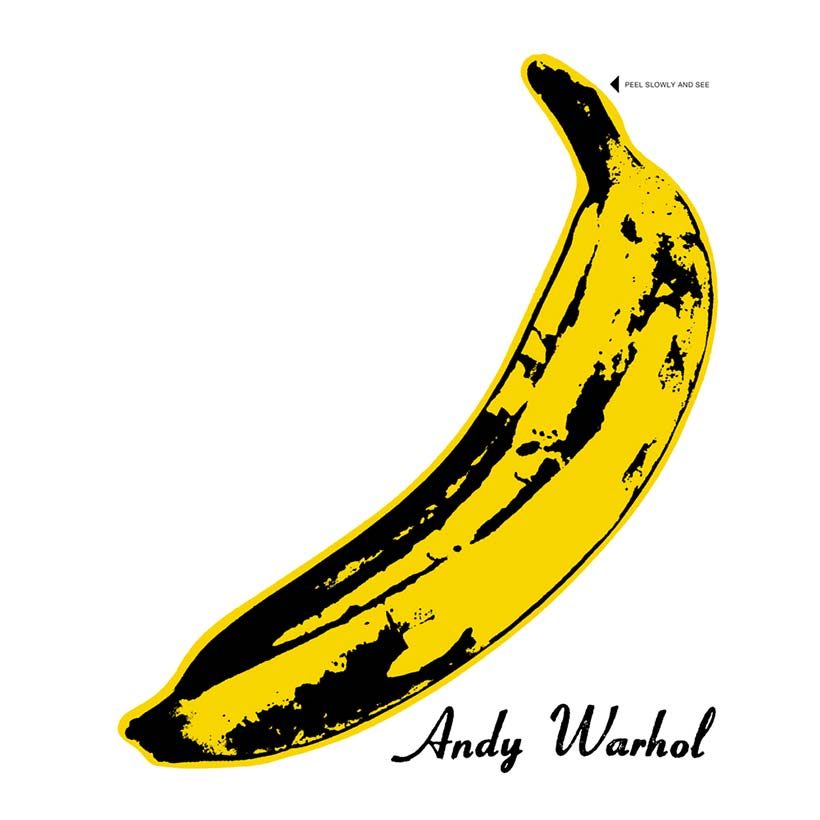‘The Velvet Underground & Nico’: Peel Slowly And See The VU’s Debut
‘The Velvet Underground & Nico’ was never appreciated during its time, but now the VU’s debut is hailed as a groundbreaking album that pointed to the future.

The Velvet Underground & Nico may have been released in 1967, but it never seemed part of the Summer Of Love – despite the fact that the Velvets and Nico’s multimedia performances during 1965 and 1966 helped spurn the psychedelicized youth culture of that time.
The musical combo was part of a subculture developing on Manhattan’s Lower East Side, along with The Fugs and The Holy Modal Rounders. During their earliest stages of development, Lou Reed, John Cale, and Sterling Morrison began accepting offers to soundtrack underground movies (Moe Tucker would join the group in a few months), after experimental filmmaker Piero Heliczer asked them to play live while his films were projected onto a screen. This association began in spring 1965, before “Happenings” became all the rage; some of the material the Velvets played, including “Venus In Furs” and “Heroin,” would end up on their debut album.
Recently named one of Apple Music’s Best 100 Albums ever, listen to the super deluxe edition of The Velvet Underground & Nico now.
Andy Warhol had been looking for a group to accompany similar experiments in film, music, and dance, called the Exploding Plastic Inevitable. It involved a troupe of 11 people, including The Velvet Underground, who, at Warhol’s suggestion, had recently added to their line-up a stunning chanteuse simply known as Nico. She had appeared in Federico Fellini’s La Dolce Vita and, while in London, became associated with Bob Dylan, who’d passed his song “I’ll Keep It With Mine,” to her for a single release.
The Exploding Plastic Inevitable multimedia show developed its revolution at a rented club space called The Dom, in Manhattan, and then brought the entire ensemble to the West Coast in May. Holing up in Los Angeles for what was supposed to be a month-long engagement at The Trip on Sunset Strip, the show was closed down after a few nights by the authorities. The Velvet Underground and Nico then spent some time recording and, while in LA, eventually made a deal with MGM Records, who would release the album on Verve.
On March 12 of 1967, The Velvet Underground & Nico Produced By Andy Warhol (as it was presented upon release) was finally in the stores and featured what are now considered Lou Reed standards, “I’m Waiting For the Man,” “There She Goes Again” and “Sunday Morning.” Reed also wrote all the songs that would make Nico a household name, including “Femme Fatale,” “All Tomorrow’s Parties” and “I’ll Be Your Mirror.”
The group represented an even further move away from pop stoicism than The Rolling Stones had. The overall feel of what became known as “the Banana album” (due to Warhol’s “peel slowly and see” cover design) was decidedly rougher than almost anything else at the time. It truly sounded like a practice session in a garage, but with formidable enough propulsion for the music to morph into some exquisite free-form jams. (Up to that point, very few albums had featured extended wig-outs; the Stones, Love, and The Seeds were the exception.)
Here was an LP on which the most radio-friendly number, “There She Goes Again,” nicked the intro to Marvin Gaye’s “Hitchhike,” sounding like the Stones’ cover version but going off into its own erotic direction. Then the album goes into crank-out dancefloor ravers the likes of “Run, Run, Run” and “Heroin,” gradually building to their peaks. All of it proves why the Velvets are often classified as one of the proto-punk bands, including MC5 and The Stooges, that planted the seeds for that later movement. There were also elegantly wasted moments, such as Nico’s lead vocal on “All Tomorrows Parties,” that touched on the element of noble glamour inherent to the Warhol/Velvets gang that was captured in beautiful spreads in Life and Look magazines.
The release of The Velvet Underground & Nico was somewhat delayed thanks to a special machine that had to be made in order to create Warhol’s original sleeve, which featured a banana-shaped sticker that peeled off to reveal the phallic fruit below. And yet the album’s original sales fell far short of the regard within which it is now held.
“While the Exploding Plastic Inevitable had a good electrician who knew how to work a fuse-box, a good roadie, good projectionists, good dancers, good photographers, and fabulous art directors,” wrote Victor Bockris in his book, Up-Tight: The Velvet Underground Story, “The Velvet Underground didn’t have anyone who really just wanted to be a good business person for them, which is probably the major factor in the faltering momentum.” Then again, they epitomize the artist who was never fully appreciated during their time. The VU now have more acolytes than was imaginable during the 60s.












